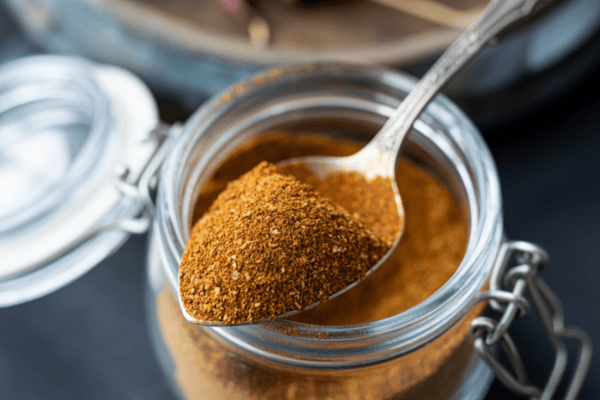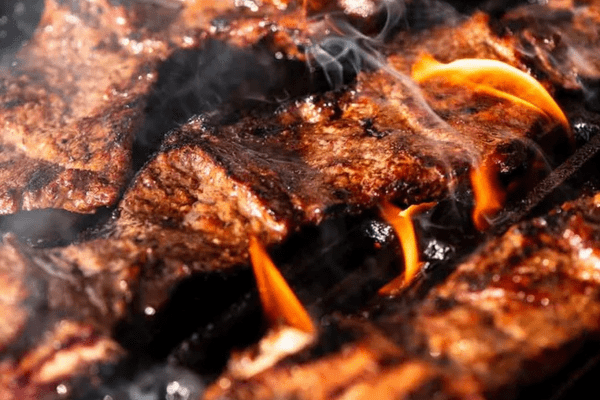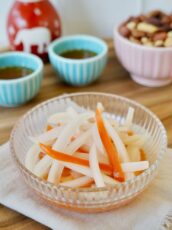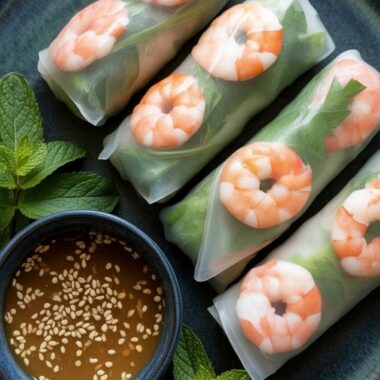If you love Korean barbecue, you’re going to want a jar of this in your fridge. Ssamjang is the bold, nutty, spicy-salty dipping sauce that pulls all those smoky grilled meats and crisp lettuce wraps together into one perfect bite. It’s thick, punchy, and downright addictive—and making it at home is easier than you think.
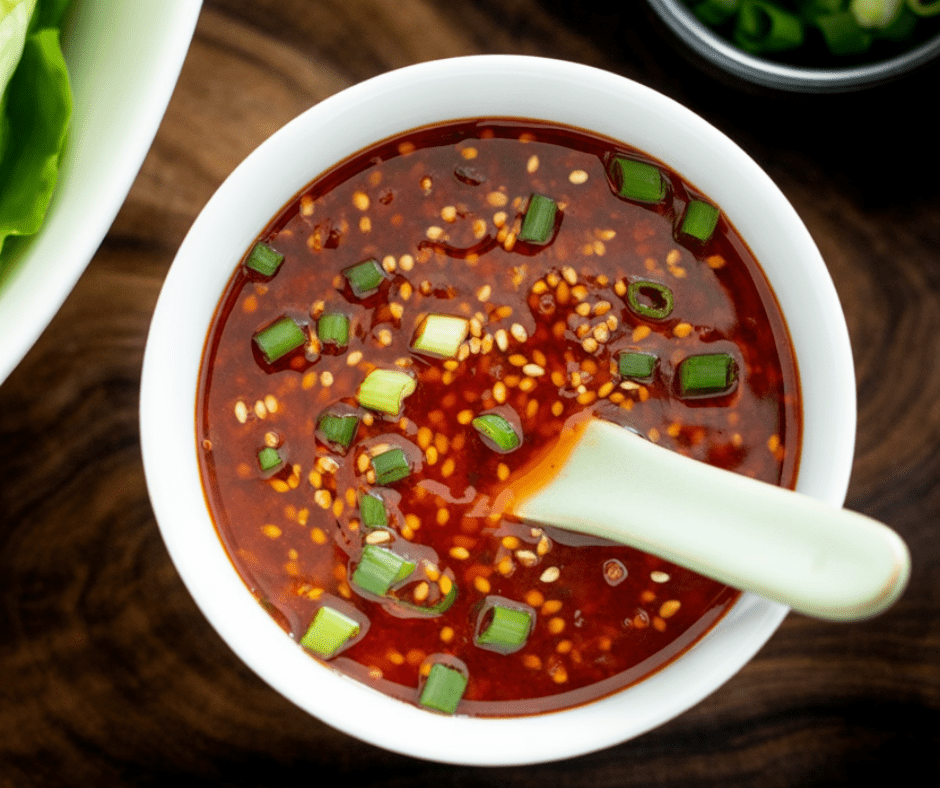
What is Ssamjang?
Ssamjang is a classic Korean condiment made by blending two flavorful staples—doenjang (Korean fermented soybean paste) and gochujang (Korean chili paste)—with a few other pantry basics like garlic, sesame oil, and onions.
You’ve probably seen it served with Korean BBQ, especially with grilled pork belly (samgyeopsal). That’s its most famous pairing, but ssamjang is far more versatile than just a barbecue sidekick. I use it as a veggie dip, a punchy sandwich spread, or even stirred into rice bowls when I want a kick of umami.
Sure, you can buy a pre-mixed version at any decent Korean grocery store—but once you try homemade ssamjang, you’ll never look back. The flavors are brighter, bolder, and fresher.
How to Use Ssamjang
When you’re at the Korean grill table, here’s how you use ssamjang the traditional way:
- Start with a fresh lettuce leaf (or perilla if you can get it).
- Add a bit of rice.
- Layer in a slice of grilled pork belly.
- Spoon on some ssamjang.
- Optional but highly recommended: throw in a slice of raw garlic, chili pepper, maybe a piece of kimchi or pickled radish.
Wrap it all up and pop the whole thing into your mouth. It should be bite-sized so you’re not struggling with a lettuce disaster!
Outside of BBQ nights, I also love dipping fresh cucumber sticks, carrots, or even bell pepper slices into ssamjang. Think of it like a Korean-style hummus—savory, creamy, spicy, and a little sweet.
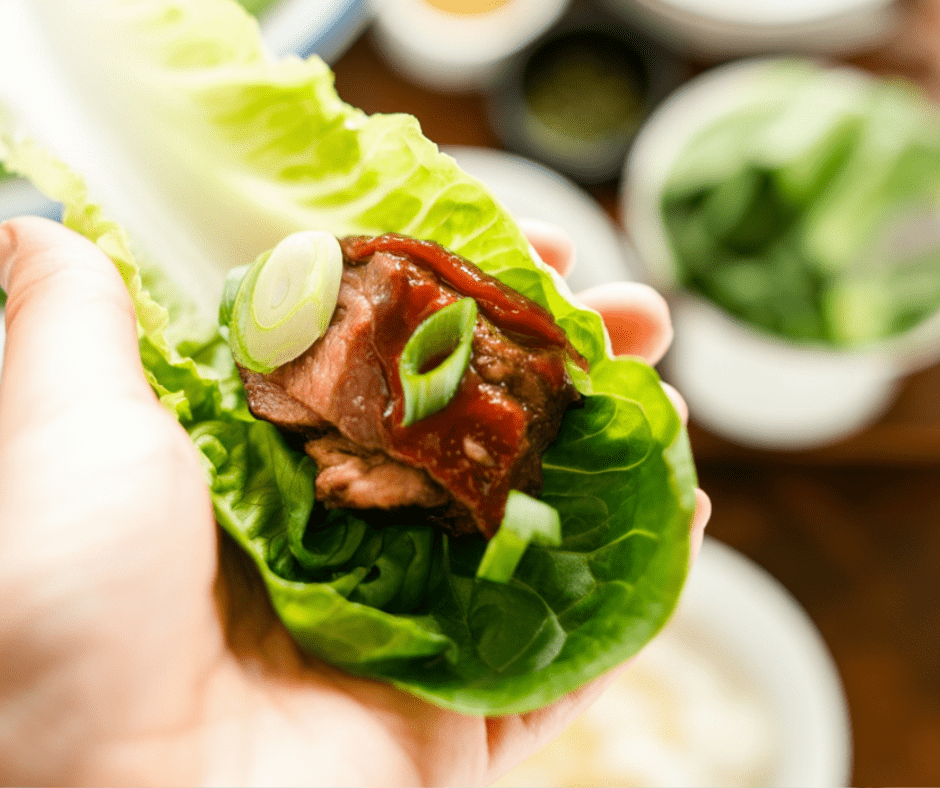
Ingredient Swaps If You Can’t Find Korean Pantry Staples
Let’s be real—not everyone has a well-stocked Korean pantry, so I ran a few fun tests with alternate ingredients. Here’s what worked surprisingly well:
- Japanese miso instead of doenjang – still savory, slightly milder.
- Sriracha instead of gochujang – definitely spicier, more vinegary.
- Apples or nuts like walnuts – adds a sweet, creamy body to the sauce.
All five variations I tested were delicious in their own way. If you’re missing something, don’t let that stop you. Ssamjang is forgiving—just keep the balance of salty, spicy, nutty, and slightly sweet.
Ingredients (Serves 6 to 8)
Main Ingredients
- 1/4 cup Korean soybean paste (doenjang)
- 2 tablespoons Korean chili paste (gochujang)
- 2 tablespoons toasted sesame oil
- 1/2 tablespoon honey
- 2 teaspoons toasted sesame seeds
- 1/2 teaspoon minced garlic
- 10g onion, thinly sliced
- (Optional) 2 tablespoons walnuts or any nuts/seeds — for a creamier, nutty version
- (Optional) 10g apple, finely chopped — for a hint of sweetness
Garnish (Optional but great)
- Thinly sliced green onions
- Finely chopped fresh chili
- Extra toasted sesame seeds
Note: Always use fresh sesame oil and nuts—they go rancid faster than you’d think and can ruin the flavor of your ssamjang.
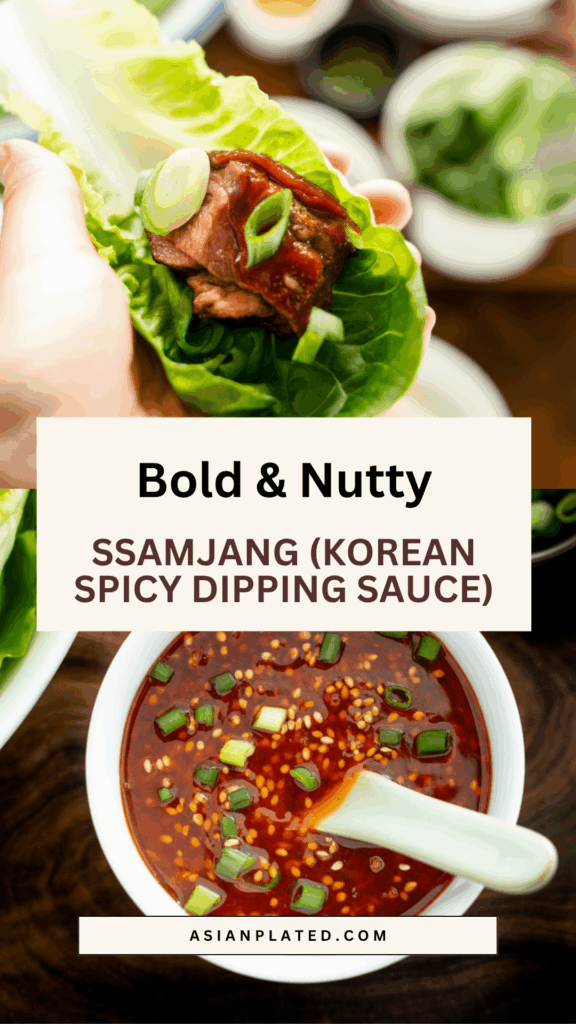
How to Make It
Toss everything into a food processor and blend until smooth and creamy. It usually takes about a minute or so. Transfer to a bowl and top with your chosen garnish. Done.
If you don’t have a food processor, just mince the onions and nuts finely and mix everything by hand—it won’t be as silky but still absolutely tasty.
Storing Leftovers
Store any extra ssamjang in an airtight container in the fridge. It’ll be at its best within 3–5 days, though I’ve stretched it to 1–2 weeks without issue. Just make sure everything going in was fresh and your container is sealed tight.
Frequently Asked Questions
Can I make this without gochujang?
Yes, swap it with sriracha or a mild chili garlic sauce. The flavor will change, but it’ll still be delicious.
Is ssamjang vegan?
This version is! Just double-check your gochujang and doenjang labels—some can contain fish or anchovy extract.
Can I freeze ssamjang?
I wouldn’t. It’s best fresh, and since it only takes a few minutes to make, there’s no need to freeze it.
Ssamjang (Korean Spicy Dipping Sauce)
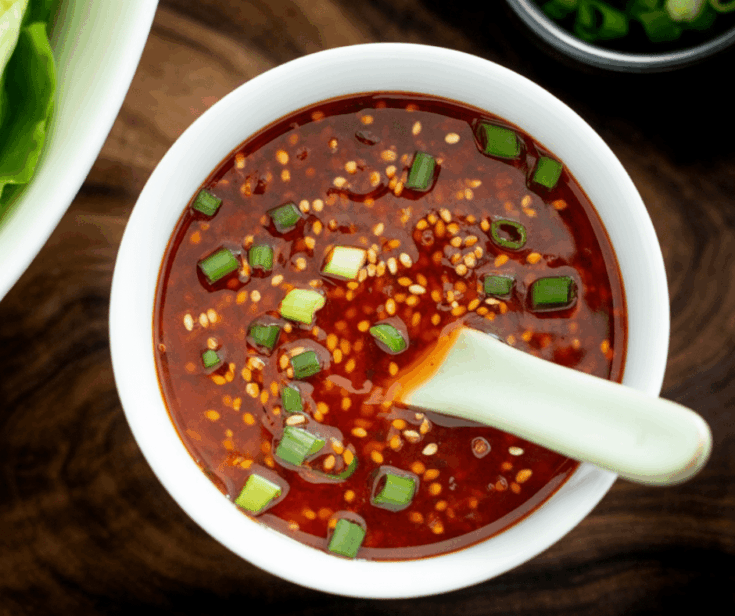
If you love Korean barbecue, you’re going to want a jar of this in your fridge. Ssamjang is the bold, nutty, spicy-salty dipping sauce that pulls all those smoky grilled meats and crisp lettuce wraps together into one perfect bite.
Ingredients
- 1/4 cup doenjang (Korean soybean paste)
- 2 Tbsp gochujang (Korean chili paste)
- 2 Tbsp toasted sesame oil
- 1/2 Tbsp honey
- 2 tsp toasted sesame seeds
- 1/2 tsp minced garlic
- 10 g onion, thinly sliced
- 2 Tbsp walnuts (or your choice of nuts and seeds) – adds a nuttier flavor and creamier texture
- 10 g apple, cored and cut into small pieces
- Green onion
- Green chilies
- Toasted sesame seeds
Instructions
- Place all ingredients in a food processor and blend until smooth, about 1 minute. Transfer the sauce into a serving bowl. Garnish with green onion and sesame seeds if desired.
Notes
- 1 Tbsp = 15 ml, 1 cup = 250 ml
- When using sesame oil and/or nuts, ensure they are fresh, as old ones may be rancid and affect the taste of the ssamjang.
- Feel free to explore alternative ingredient options.
Nutrition Information:
Yield: 6 Serving Size: 1Amount Per Serving: Calories: 116Total Fat: 9gSaturated Fat: 1gTrans Fat: 0gUnsaturated Fat: 7gCholesterol: 0mgSodium: 300mgCarbohydrates: 9gFiber: 1gSugar: 5gProtein: 2g
Asianplated.com, occasionally offers nutritional information for recipes contained on this site. This information is provided as a courtesy and is an estimate only. This information comes from online calculators. Although allchickenrecipes.com attempts to provide accurate nutritional information, these figures are only estimates.
How to Serve
Aside from the classic BBQ lettuce wraps, try it with:
- Raw veggie platters
- As a burger or sandwich spread
- A sauce for grilled mushrooms or tofu
- Stirred into a warm bowl of rice with roasted veggies
This sauce has depth, heat, and complexity—it can turn the simplest plate of food into something worth remembering.
Try other recipes:

